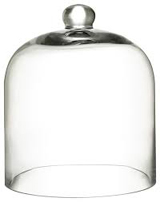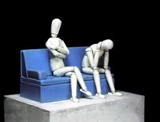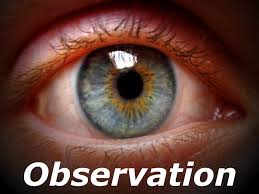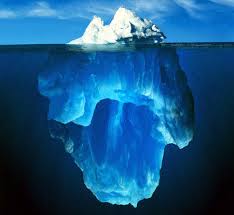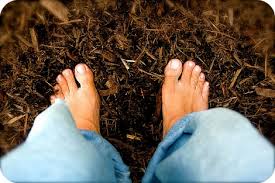Inner approach to health
A matter of habit
Abstract
A major part of each one of us has been ‘constructed’ since birth. Adverse habits arise out of this construction and retard our physical and psychological well-being. In this article, the author leans on personal experience and looks at the sources and solutions to this affliction from the perspective of personal growth. He regards the subconscious and the physical mind as principal agents behind the spreading of habit. To conquer habit one needs to reach a higher poise of being, in other words, through the spirit or soul. The shadows of our nature can be filled with light and consciousness in various ways. Working on habit is perfect training for life and the process of transformation can be invited as soon as habits are cleared and conquered.
Introduction
Nothing twists the nature quite like bad habits. They support a vast range of afflictions, creating an attritional and enduring aspect to human suffering. Adverse habits retard our physical health and psychological well-being; they block our integral progress. Speaking personally, I find negative habit to be a formidable foe; like a cancer it always seeks to swell and grow.
On the terrestrial level, it is ‘ingrained’ in the earth atmosphere where “the weight of millennia of bad habits” presents a huge obstacle bringing a “sense of inevitable decay” which is “absolutely spontaneous”. This “catastrophic habit” is reflected in miniature, in the body itself, where it is “terrible to contradict (1).” In the body is found a concentration of every human difficulty; yet it is here that a vast potential is contained. It is an anchor pulling humanity down to unconsciousness and is yet the crucible for its luminous transformation. The body is a battleground where many forces uplift, but where habits press to pin it down to more fixed typal grooves.
This article leans on personal experience and attempts to examine the nature of habits: its sources and possible solutions, particularly when one has embarked on a path of personal growth.
The sources of habit
Each of us has been impregnated with habits since birth. Actually, the process seems to take place even before we are conscious beings. For most of us, our youth is spent unaware of what is going on, “that slow formation through hours and hours, through days and days, experiences added to experiences, which gradually builds up a consciousness. You are underneath it as beneath a bell-glass. It is a kind of construction which covers and in a way protects you, but in other ways limits you considerably. All this you absorb without even being aware of it and this forms the subconscious basis of your own construction. This subconscious basis will act on you throughout your life, if you do not take care to free yourself from it (2).” The process of personal growth requires a constant discernment between what is ‘true’ and what has been constructed.
The subconscious expands during our formative years becoming a huge reservoir of repressed feelings and associations. The more painful the memory, the more one seeks to suppress it but the memory is never entirely lost: it just sinks beneath the arc of our vision, waiting for the opportunity to surface at an opportune time.
I often used to wonder why illness sometimes had a way of repeating itself at a specific time, situation or place. In the first instance, it often arises through a ‘concurrence of circumstances’ but the mind latches onto this event and makes it into a construction. This idea never totally disappears, driven down to the subconscious, quietly waits for something to ‘tickle the memory’ when it can move up again into the more active consciousness and manifest as illness (3).
The body remembers for a long time; indeed it is often plagued by the spectres of the past. The remembrance unless worked upon in a true and proper way, never entirely goes away but gets pushed down into the subconscious, waiting for a suitable trigger to reappear. It later crosses the mind like a ‘passing dart’ and so returns (4).
Memories persist in so many forms. I observe that accidents can also become a habit. A collision occurs and the mind then sows its seed. The more rational side of my nature may try to bottle it up in a notion of absurdity but the formation gets pushed down, waiting for a similar time and circumstance when the consciousness can be caught off-guard and reappear as a catastrophe.
Traumatic times of difficulty produce memories which occasionally surface but more often stay behind in the background, producing a murky sense of unease and discontent. Putting one’s finger on the reason for the affliction is nearly impossible unless one takes the trouble to enquire sincerely inside. But as one grows in consciousness these dark moods can become more frequent to the point of becoming habitual. Many old shadows now rise to the surface. Sooner or later, it becomes imperative to squarely face the remembrance. If one aims to develop integrally, there is no choice. In this instance, the Force behind the sādhanā uses habit as a means for growth.
The physical mind
But it is not always our repressed states that provoke habits. Consider the automatism of the physical mind, that part of our mind whose turn is solely outward. Depending on the sense-mind, it is exclusively absorbed with physical things and sees only objects and externalities, drawing its ideas from data given by them. It “infers from them only and knows no other Truth until it is enlightened from above (5).”
The continual bombardment of the physical mind creates a negative mindset which can become habitual. It has a way of enlarging the smallest inconvenience out of all proportion. What really vexes is the most unconscious part of the physical mind, which connects it to the ‘material substance’. ‘Spontaneously defeatist’ and given to fears and worries, it never stops, forever expecting the worst (6). Unless challenged, particularly on the path of growth, it can become a recipe for psychological disaster.
If one considers it, most adverse things happening to us can become a habit. Pain can certainly become one. Also if one lives in a state of fear, it is obvious that the mind will consistently attract what it fears. The adverse forces 1 too, obviously use habit to prolong their dominion. Negative habits seem to develop cumulatively. I have found that psychological habits reinforce those of the physical. It might often start from inside and seep outward. But it also seeks resonance from outside. Every part of our nature is interconnected. Habits can spread through contagion. Outside patterns can be perversely invited from within; habit attracts more habit and evokes a habitual response.
If one is seeking growth, absorbing bad habits can result in a slippery fall but it doesn’t always have to be like that. In contrast to this, there is a path of synchronicity where circumstances and conditions continually present themselves to further our progress.
Everything arises spontaneously and is not predetermined by habit. Deep down, it is perhaps a matter of choice.
Progress implies progress in an integral way. Each new condition can be an opportunity for growth if faced with a sincere trust.
Awareness
One can generalise about habits but I believe there is always a specific reason for them lying in some chink of our individual nature. This flaw might be caused by any number of things: one’s education, upbringing or even the influence of atavism. A common denominator however is awareness, or lack of it. Both physical and psychological habits breed on unconsciousness, when we neglect those instruments given to us. They then become slaves to forces from outside; true inner mastery is forgotten.
I have found that when serious illness occurs, the rhythm of the body gets disrupted. This can have a way of inviting habits to enter. A warped circuitry of the body may allow wrong habits to proliferate. The old defences and safeguards may be effaced and the guardian consciousness may get wrapped up in itself so it usually plummets. Shortcuts may be taken to alleviate the body, making a ‘fixed crease (7)’ so more bad habits invade and leave their scars.
Whenever I am able to catch my awareness slipping out of the body, I recognise it as a habit. Invariably it is quite automatic. Rather than total evacuation, there is a degree of fluctuation. When problems pile up, a part of me might look for the exit sign, a convenient escape-route from difficulty and pain. We are living in times of great transition and upheaval, when so many old constructions are being destroyed. It is our body which bears the brunt of this and one knee-jerk reaction is to simply vacate the physical. But this only creates a state of emptiness for more habits to intrude. Pain will also intervene to remind me once more to fill the vacuum. It is ironic but when I find myself fully grounded in the body, I face this pain and turmoil with a much stronger poise. It is the only way to wholly move forward; this conscious presence is really a saving grace. Unconsciousness, on the other hand, only gives the chance for bad habits to proliferate. On a physical level, the Mother2 sets the example. She speaks about a ‘transfer’ and learning of the cells “from acting out of habit and reaction to letting the divine Consciousness act (8).”
Seeking a solution
I feel that the first step is to become aware existence of habits and how they make their mark. In the end, the movement needs to be observed from its source but as soon as we start to see its workings, we can consciously withdraw our consent. Take the body for instance:
“The physical is the slave of certain forces which create a habit and drive it through the mechanical power of the habit. So long as the mind gives consent, you do not notice the slavery; but if the mind withdraws its consent, then you feel the servitude, you feel a force pushing you in spite of the mind’s will. It is very obstinate and repeats itself till the habit, the inner habit revealing itself in the outward act, is broken. It is like a machine which once set in motion repeats the same movement…. a quiet persistent aspiration will bring you to the point where the habit breaks and you are free (9).”
At the very outset, it is very clear that one needs to introduce good habits to replace the faulty ones. This may be called speaking the ‘language of the body’. If we don’t speak its language how can we expect it to understand what we want it to become? How can we convert it into something beautiful and true? Initially at least, if one is working on the physical, it is essential to replace wrong habits with right ones through systematic physical exercise and discipline. It is a process which correlates to the mechanical character of the body. Initially this is all it understands. Obviously then, the mind takes a leading role in this process. However, as the body gets more enlightened, the conditions start to change. Sooner or later, the further one moves along the path, one usually finds that even these positive patterns may not be fulfilling the requirements of growth. Eventually, all these habits must be replaced by an inner alchemy which can only ensue from tapping the truth of one’s being.
Ultimately then, we have to raise the body above habits. We want to soar to the Truth! The Truth is not bound by habit because the Truth is quite free. So ultimately a new language has to be taught and that is the work of the soul. The function of the soul is to harmonise; so I feel that habits will then be changed into a spontaneous vibration that defies all definition.
I prefer to trust the natural instinct of the body, not the mind. For me at least, the body offers a clearer passageway to the spirit. However, no part of our instrumental nature has the capacity to complete the task by itself. As long as it is untransformed, it is separate and disparate: it is still wrapped up inside the ego. A power greater than nature has to intervene.
The keynote is observation: it is work in detail. Sometimes, when I am working inside, I might notice a fissure on a certain part of the body. There might, for example, be pain or a feeling of rigidity and tension in the lower spine which obstructs the descending Force from reaching down fully to the legs. The obstruction will go when I place my consciousness on it but it has a way of reappearing when the consciousness is averted away. Only our awareness can cement these cracks because when it is absent, the habit intervenes and disrupts the flow of energy. One has to ‘be there’ for the habit not to rise again. One has to be present and fully alive in the body. One has to bring forward that unique feature offered by one’s nature, connect it with our truth and integrate it with the physical being. It is painstaking work and needs to be done again and again. However, this practice is one of joy. When a wrong movement is replaced by a right one a true vibration steps forward bringing with it an inimitable light and peace.
So to efface negative habits one needs to start by working inside, trace them to their very source. But with the physical the work needs to be supplemented from outside too. It is a characteristic of the integral approach that there is no demarcation between inside and out. One tries to observe the cause/effect relationship behind every movement. The knowledge attained through this integral approach truly helps.
I believe our relationship with time can have a critical effect in barring habits from entering in the first place. We tend to trawl in adverse habits and traumas if we dwell excessively in the past. This mindset will only produce a psychological deviation for them to intrude. Being present, on the other hand, induces no such resonance. Indeed, the state of being provides the perfect framework for spontaneous development and progress.
If one wants to eradicate habits, we can also examine our outer activities. How much are they governed by habits? How often do we approach a task or activity in a habitual way? Are we wrapped up in routine and repetition? The outer habit reinforces the inner repetition. One can work on becoming free of one’s customary, dispensable activities and movements. Awareness is once more the key.
Arch masons of habits
So what can be done with these two arch masons of habits, the subconscious and the physical mind? It is clear that the subconscious must be changed into the conscious. The Mother teaches that “if each thing that rises to the surface becomes conscious, at that moment it must be changed. There is a more direct method still: it is to enter the subconscient in one’s full consciousness and work there, but this is difficult. Yet so long as this is not done, all the progress one has made — I mean physically, in one’s body — can always be undone (10).”
Working with the subconscious can be very perplexing. There is nothing tangible to lay one’s hands on; one doesn’t really know where to begin. The truth is, one has to be led. There is a secret Force behind the sādhanā which guides and steers us through the various contours of the practice. I try to surrender to it and allow it to show me the more shadowy aspects of my nature. There is a necessity to stay attentive and vigilant as, with my collaboration, the process goes much more quickly. I can then begin to catch those patterns rising to the surface as and when they emerge. As for the ‘more direct method’, I have found myself at times being guided downwards to those darker regions, areas so obscure they defy all definition. It is totally spontaneous; there is no personal decree. If it happens, I try to stay alert. I have been told that converting the subconscious is usually a later stage of our overall journey; but these glimpses reassure me that at least a part of this work has already begun.
There are various ways of converting the physical mind into an instrument of progress. If one is inclined, one can open it to more enlightened levels above, such as the intuitive mind. Again I find it not a process I can coerce. I find it helps to picture the entire mind as a still, limpid pool. I trust that the occasional drops of light will become more frequent and illumine the nether parts of my mind.
In Agenda, the practice of japa is extolled on many occasions. Indeed, the Mother says, “The japa is made precisely to control the physical mind (11).” Calling a sacred name has a way of stopping the physical mind in its tracks. At first it seems to nullify and then it seeks to convert. Quite apart from anything else, the vibration evoked through japa must have a purifying effect with the subconscious too. If one persists, the clarifying force will percolate down to the most nether regions of our nature. Remembrance is the key. But japa seems so flat and lifeless unless the heart is involved! It can become an intense communion and sometimes the song in my heart carries me throughout the day. In a very true way, japa speaks the language of the body: the body infused with the love and consciousness of the soul.
Working through habits
Working on habits is a perfect training for life; it requires endless perseverance and patience. It sharpens our powers of concentration and observation. We gradually come to realise why we are here. Whilst living more and more in the spirit, we must keep our feet firmly planted on the ground. We have to be present in both time and space. For those who embrace challenge readily it is the perfect work. “For you carry within yourself the problem and the solution (12).” It is an exercise in self-awareness and a lesson in what constitutes a human being. Shedding habits is rarely rapid. If it were so, it might induce a kind of internal anarchy if our being were abruptly derailed from its old familiar tramlines. The process represents the necessary catharsis before the work of transformation can begin and negotiating one’s way through such obstacles is indeed an apprenticeship to supermanhood.
Sooner or later on the road to transformation, one will find one’s way blocked by this huge edifice of universal nature. Her cast-iron laws 3 seem irreversible but actually amount to no more than a huge habit itself which clamps us down to our animal past. At the further frontiers looms the spectre of death, the most unyielding habit of them all 4. If one wants to proceed to the very end, every habit can and must be conquered…
“There is no law of Nature that cannot be overcome and changed, if we have the faith that all is ruled by the Lord and that it is possible for us to come into direct contact with Him, if we know how to escape from the prison-house of age-old habits and give ourselves unreservedly to His will. (13).”
References
1. The Mother. Mother’s Agenda, Volume 8. English translation. Paris: Institut de Recherches Evolutives; 1993, p. 197.
2. The Mother. Collected Works of the Mother, Volume 8. 2nd ed. Pondicherry: Sri Aurobindo Ashram Trust; 2003, p. 391.
3. The Mother. Collected Works, Volume 6. 2003, p. 367-8.
4. Ibid.
5. Sri Aurobindo. Birth Centenary Library, Volume 22. Pondicherry: Sri Aurobindo Ashram Trust; 1970, p. 327.
6. The Mother. Mother’s Agenda, Volume 6. 1989, p. 230.
7. The Mother. Collected Works, Volume 4. 2003, p. 344.
8. The Mother. Mother’s Agenda, Volume 8. p. 308.
9. Sri Aurobindo. SABCL, Volume 24. 1970, p. 1442.
10. The Mother. Collected Works, Volume 7. 2003, p. 142.
11. The Mother. Mother’s Agenda, Volume 1. 1979, p. 431.
12. The Mother. Collected Works, Volume 8. 2003, p. 174.
13. The Mother. Collected Works, Volume 10. 2001, p. 241.
14. Sri Aurobindo. SABCL, Volume 17. 1972, p. 93.
15. The Mother. Collected Works. Volume 15. 2004, p. 120.
1 Anti-divine forces inimical to our growth and progress.
2 Mirra Alfassa, born in Paris in 1878, and later known as the Mother, came to Pondicherry and developed the Integral Yoga with Sri Aurobindo.
3 “Law is a process or a formula; but the soul is the user of processes and exceeds formulas (14).”
4 “The target at which we are aiming is immortality. And of all the habits, death is surely the most obstinate (15).”
James Anderson is a member of SAIIIHR and coordinating editor of NAMAH.
Share with us (Comments,contributions,opinions)
When reproducing this feature, please credit NAMAH,and give the byline. Please send us cuttings.


